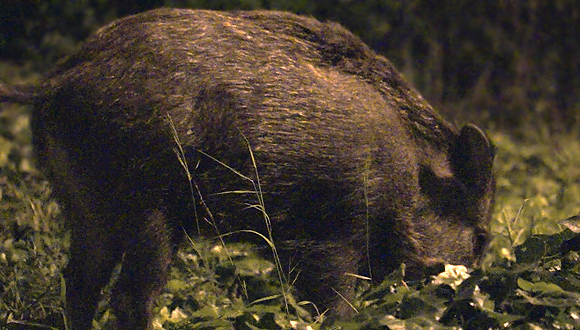The CREAF examines the impact of the expansion of the boar
The IMPACTBOAR project is a collaboration project between the CREAF and MINUARTIA, which is responsible for the evaluation of the impact of the expansion of wild boar in Alpine and subalpine environments, specifically, the National Park of Aigüestortes and Estany de Sant Maurici.

This study will be carried out until 2016 by researchers Josep Maria Espelta , Alberto Muñoz, Carme Rosell, Ferran Navàs and Marc Fernandez, and is funded by the OAPN (Organism of Autonomous National Parks of Spain) .
IMPACTBOAR has very clear objectives. On the one hand they want to assess the impact of the expansion of the wild boar in Alpine and subalpine environments. It will analyse how the boar uses these habitats as well, and what are the temporary uses of each in in different seasons of the year and the resulting damage (e.g. rooting boars). This may seem very unusual indeed, bearing in mind that at the beginning of the 20th century the boar was a very scarce animal in Catalonia, but it has been observed that, with the abandonment of rural activities during the last century, the species has expanded without impediment, especially in the plains, but increasingly in the middle and high mountains.
On the other hand, it has been observed that this range expansion into Alpine and subalpine meadows (where the boar there roots around to get subsurface food) impacts the regeneration of trees, and can affect other very characteristic elements of the local fauna as well, such as the as mouse Apodemus flavicollis, possibly sensitive to the damage done by this newcomer.
Once the study is finished, the researchers will write protocols designed to to reduce the impact of wild boar. "For example, in highly sensitive areas or areas that may be very affected, it would be possible close off the areas so that the wild boar cannot access," explains Navàs.
The researcher Josep Maria Espelta explains that the expansion of the boar into other areas that are not flat may be attributed to two reasons: "first of all, the abandonment of some rural activities such as livestock and mountain farming has contributed to the growth of forests and thickets where wild boar can find shelter. Secondly, climate change may also have something to do with it, because rising temperatures reduce the amount of snow and the presence of glacial soils, which previously slowed down the expansion of this ungulate.”
With regard to the expectations or hypotheses from the team of researchers, Ferran Navàs explains that they already have some ideas from some previous studies that they have done. "Surely we will find many boars rooting in pastures, but what needs to be investigated is if the boars cause negative impacts or have beneficial effects on biodiversity, and we will also probably be able to verify if global warming increases the number of wild boars."
Images recorded by MINUARTIA Parc Nacional d’Aigüestortes i Estany de Sant Maurici







